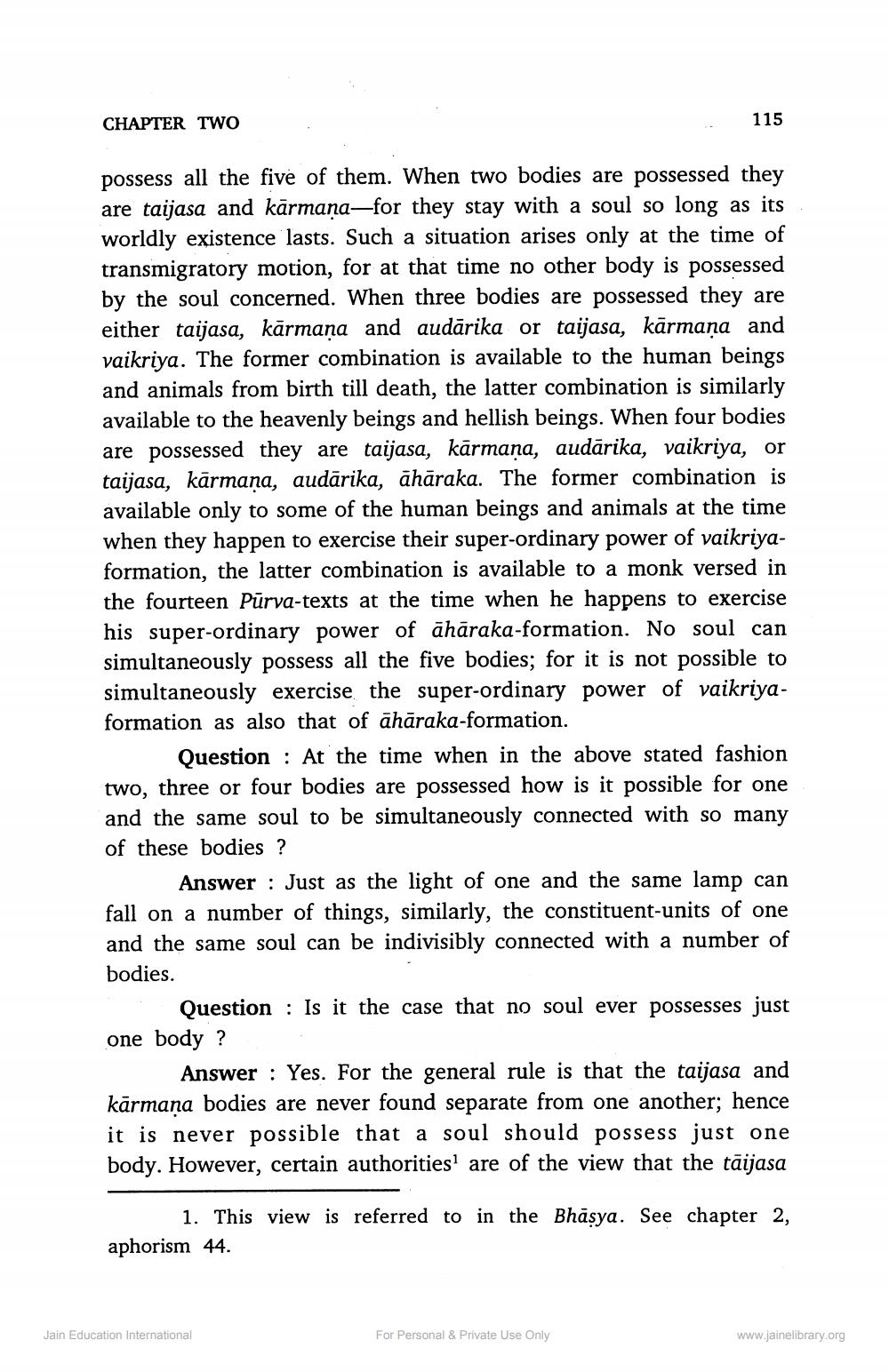________________
CHAPTER TWO
115
possess all the five of them. When two bodies are possessed they are taijasa and kārmaņa—for they stay with a soul so long as its worldly existence lasts. Such a situation arises only at the time of transmigratory motion, for at that time no other body is possessed by the soul concerned. When three bodies are possessed they are either taijasa, kārmana and audārika or taijasa, kārmaņa and vaikriya. The former combination is available to the human beings and animals from birth till death, the latter combination is similarly available to the heavenly beings and hellish beings. When four bodies are possessed they are taijasa, kārmaņa, audārika, vaikriya, or taijasa, kārmaņa, audārika, āhāraka. The former combination is available only to some of the human beings and animals at the time when they happen to exercise their super-ordinary power of vaikriyaformation, the latter combination is available to a monk versed in the fourteen Pūrva-texts at the time when he happens to exercise his super-ordinary power of āhāraka-formation. No soul can simultaneously possess all the five bodies; for it is not possible to simultaneously exercise the super-ordinary power of vaikriyaformation as also that of āhāraka-formation.
Question : At the time when in the above stated fashion two, three or four bodies are possessed how is it possible for one and the same soul to be simultaneously connected with so many of these bodies ?
Answer : Just as the light of one and the same lamp can fall on a number of things, similarly, the constituent-units of one and the same soul can be indivisibly connected with a number of bodies.
Question : Is it the case that no soul ever possesses just one body ?
Answer : Yes. For the general rule is that the taijasa and kārmaņa bodies are never found separate from one another; hence it is never possible that a soul should possess just one body. However, certain authorities are of the view that the tāijasa
1. This view is referred to in the Bhäsya. See chapter 2, aphorism 44.
Jain Education International
For Personal & Private Use Only
www.jainelibrary.org




